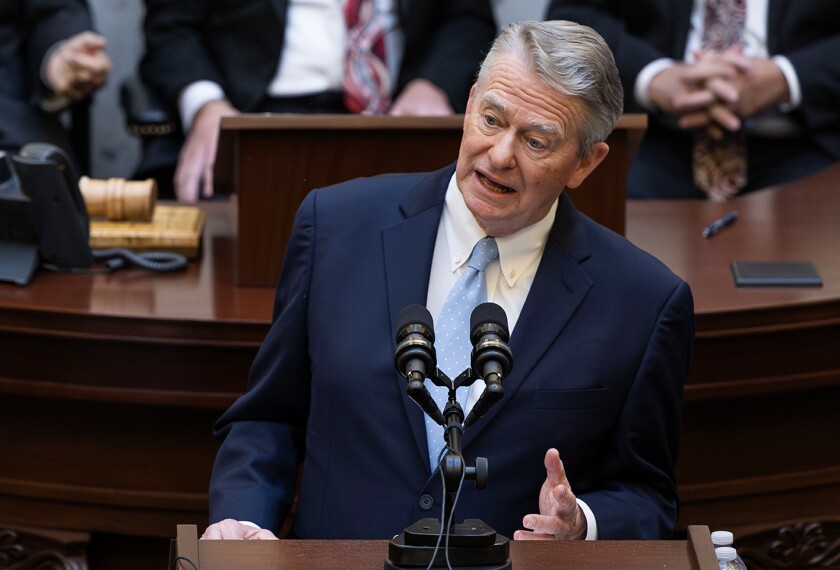Wisconsin lawmakers are warming to proposals that would modify much-criticized state caps on school spending, after long dismissing warnings from administrators and teachers that such measures are crippling schools.
Legislators took up the issue again last week, following testimony by parents and educators about the status of their community schools under revenue caps.
Several hundred people packed four conference rooms in the state Capitol for the five-hour-long hearing, which featured examples of financially strapped schools’ cutting programs, delaying textbook purchases, and ignoring maintenance problems.
Meanwhile, PTA members personally delivered homemade brownies to lawmakers with the message that they are tired of financing schools through bake sales.
Many lawmakers have taken the messages to heart, said Rep. Luther S. Olsen, the Republican who chairs the Assembly education committee. Given the sometimes skyrocketing costs of such hard-to-control items as heating and special education, members of both the Assembly and the Senate recognize that districts can no longer live within revenue limits set eight years ago, Mr. Olsen said.
Though specific legislation has yet to be proposed, lawmakers are kicking around solutions that include raising the caps, crafting exemptions, and establishing reimbursement programs for expensive services, such as bilingual education, he said. The plan that seems to have the most support among legislators would give school boards power to increase spending by 1 percent—about $75 per pupil—without a local referendum, as the law now requires.
Mr. Olsen predicted the plan would face a tough time in the legislature but would ultimately wind up as part of the state budget for fiscal 2002.
“I think the time might be right,” he said.
The idea behind the revenue caps, enacted in 1993, was to slow school spending and slash property taxes.
Spending was frozen at 1993 levels, and slight increases have been provided annually to cover inflation. In exchange, the state offered to pick up a larger share of school expenditures.
Local Control Cited
Proponents of the plan continue to point to the power of school boards to exceed the caps as long as local voters approve, a system that they say allows communities to decide for themselves whether they can afford school projects.
Critics contend, however, that the restrictions have hobbled school districts around the state.
Holding referendums are costly, time-consuming, and often unsuccessful, said Karen Royster, the executive director of the Milwaukee-based Institute for Wisconsin’s Future, a think tank that is studying the effect of the caps.
Meanwhile, half of Wisconsin’s school districts are coping with declining enrollments and therefore losing state funding, she said. At the same time, students are requiring costlier services, such as bilingual and special education, she added.
“This is way beyond an inconvenience,” Ms. Royster said. “We’re really looking at school districts on the verge of not being able to maintain even minimal standards.”
From 1993 to 2000, voters gave the go-ahead to 53 percent of spending-cap referendums, state education officials report.
Ms. Royster cites cases in which roofs have leaked on students during class, textbooks are a decade old, and beloved extracurricular activities have been eliminated. In one Wisconsin district, for instance, kindergartners have to wait in line to use the classroom’s only pair of scissors, she said.
No Compelling Reason?
The best solution, in Ms. Royster’s view, would be to scrap the revenue caps entirely, but that is politically unlikely.
“I do not see the state doing away with revenue caps,” concurred Sen. Fred A. Risser, the president of the Senate and a Democrat. “The best that can happen is a slight modification of them. There may be exemptions for such things as utility costs.”
Even if the legislature agreed to amend the law on revenue caps, the state’s incoming chief executive, Republican Scott McCallum, may prove skeptical.
“The lieutenant governor has not seen any compelling reason yet as to why those provisions need to be changed,” a spokesman said last week.
Mr. McCallum is slated to succeed Tommy G. Thompson, who was confirmed last week as the new U.S. secretary of health and human services.




